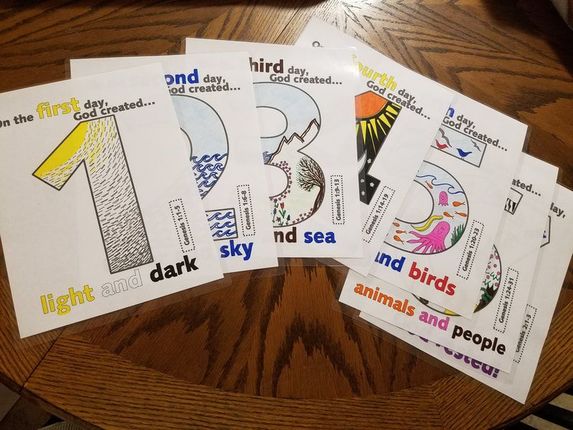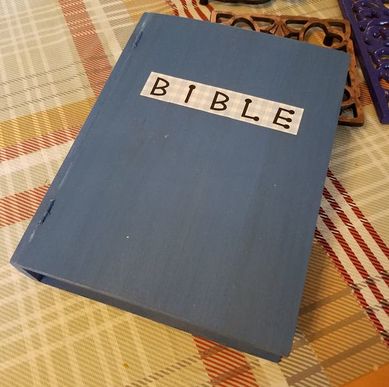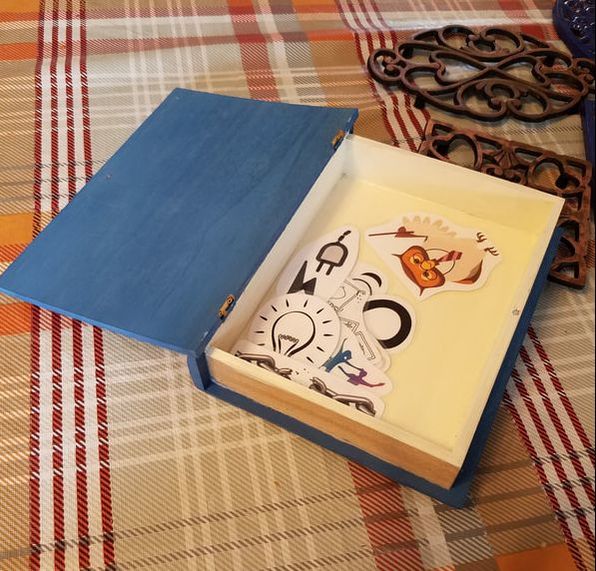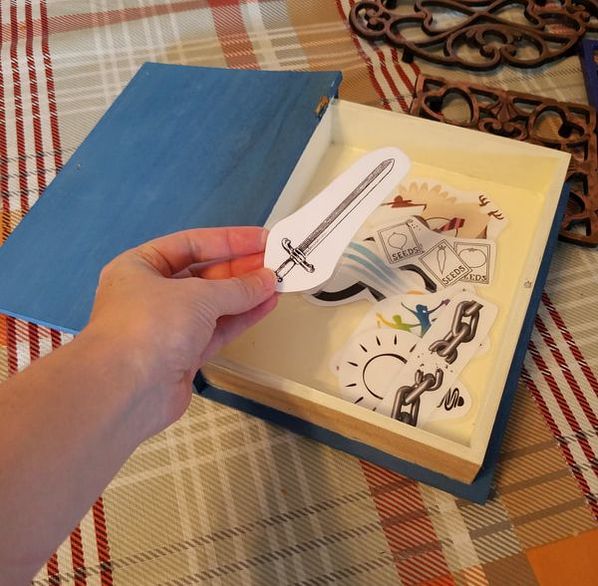|
Creation is a fun lesson, and can be taught many ways. I usually incorporate the song, "Day one, day one ..." It's catchy and helps us all remember what happened on which day. I also use my visual aids pictured above. I snagged them here, if you want a copy of your own. There are several others on Pinterest, as well, if you don't love these.
Then, to keep the students' attention, and get them involved, I hand out this sheet. It's a handout that has miniature versions of the numbers, but blank. This lets the kids color in what happened on each day, a task that also helps drive home the lesson. I love when I can get the kids drawing the story along with me. And they seem to like it, too. I'd love to hear from you. What all do you do when you teach this amazing lesson?
0 Comments
A couple different curriculums I have used in the past few years have started by introducing the children to the Bible. By that, I mean having one (or two in the one I'm using now's case) lesson on how we got it, what it consists of, etc. For older kids, that probably wouldn't be an issue, but I teach lower elementary, mainly second grade. Those kids need something to keep their attention. I had seen another site where they had done up a wooden book like you see above (I got mine at Michaels using my 40% off coupon) to look like a Bible. When you open it up, you can have anything you want inside. For this lesson, I did a search through a concordance for other words associated with "Word of God" or "Word of the Lord" or even "Scripture." I then came up with the different images to go with each scripture. I cut mine out and laminated them. Then, we talked about each one and what it meant as I pulled them out. Each of the students had a sheet to follow along and we looked up most of the scriptures together. This helped them realize that the Bible isn't just a book of stories. It is important because it's alive and powerful and the only thing that can help us be free and get to Heaven. If you would like copies of these, click here to download and use in your own classroom. Another week, we talked about information like how long it took for the Bible to be written, how many people helped write it down, and what all it consisted of. I have a little worksheet here, if you're interested in a copy of that, too. The answers are included on the back pages. I like to copy mine front and back and then let the students fold them in half so they look a little like a Bible. Sometimes, it's just helpful to have something to write it down on.
To start that lesson, I have each student a piece of poster board and told them to cut it into a puzzle piece. When we all got together, I asked if they could make one puzzle out of all their pieces. No matter how hard they tried to wiggle and turn them, they wouldn't all fit right because they had been made by different people who had different ideas of what a puzzle piece should look like. I then asked if they knew how many people had written the Bible. After letting them guess, I finally said around 40. Then, I said, "If 40 different people worked on this, does it fit together like the puzzle we made or does it fit together perfectly?" That led to a great discussion on how, even though the Bible is made up of various stories and books, it is really one story that goes from Genesis to Revelation, and it's perfect and complete because God is the one who gave all the authors the words. It was a really great illustration my curriculum had suggested, and I just had to share in hopes that this will help some of you as you teach, too. |
I am one of those Bible class teachers who can't stand to just present the lesson and then hand out a worksheet. I want whatever I do in class to stick with the kids, reinforce the lesson, and really make them understand that this isn't just a story ... it's something that really happened. I want to include some of the ideas I've come up with here so that I can hopefully help some of you who want the same thing. I'd love to hear your ideas, too!
Archives
May 2024
Categories
All
|




 RSS Feed
RSS Feed
